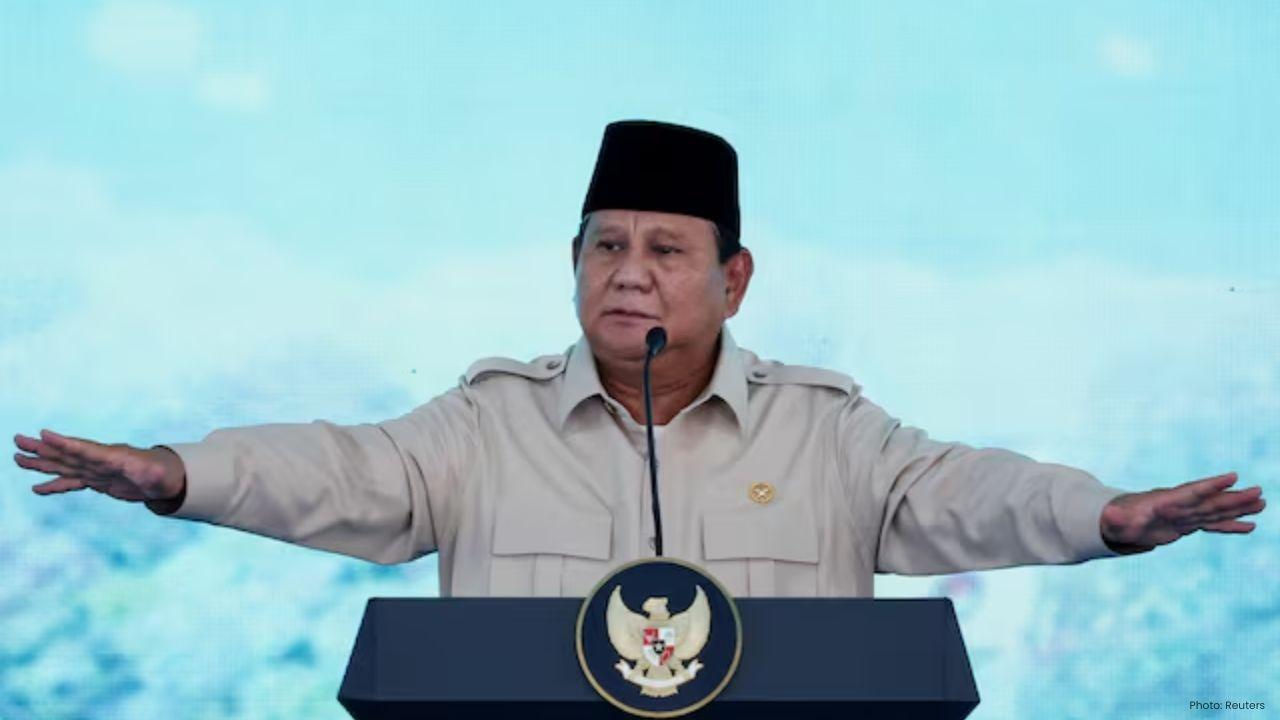
Join 10k+ people to get notified about new posts, news and tips.
Do not worry we don't spam!

Post by : Anis Farhan
Southeast Asia is home to a diverse population where education has long been a path toward upward mobility. In recent years, however, traditional education systems have struggled to keep pace with rapid technological change, rising student numbers, and the need for lifelong learning. Open universities, designed to provide flexible and accessible higher education, have turned to digital transformation as a lifeline. The adoption of virtual classes and emerging technologies is not merely about convenience; it is a response to real educational needs that cut across geography, income levels, and skill gaps.
As more students in the region enroll in open universities, the shift toward virtual learning environments has become both inevitable and urgent. Technologies such as artificial intelligence (AI), cloud platforms, augmented reality (AR), and learning management systems (LMS) are being deployed to enhance the educational experience. Yet, the integration of such tools reveals a dual challenge: how to ensure inclusivity for students in remote areas while maintaining the quality and relevance of education in an increasingly digital world.
The cornerstone of Southeast Asia’s open universities is the move toward virtual classrooms. Platforms like Microsoft Teams, Zoom, and Moodle have become standard, enabling lectures, tutorials, and discussions to continue across borders. Universities in countries such as the Philippines, Indonesia, Malaysia, and Thailand have developed blended systems that combine asynchronous learning (recorded lectures, digital modules) with synchronous sessions where students and faculty interact in real time.
The impact of this transition has been profound. Students who previously had to travel long distances or juggle work and studies can now access classes from anywhere. This democratization of education has widened the reach of open universities, ensuring that higher learning is no longer confined to those who can physically attend campuses.
Still, challenges remain. Uneven internet connectivity, particularly in rural or underdeveloped areas, has led to unequal access. Students with limited bandwidth often struggle to keep up with live sessions. In response, open universities are adopting mobile-first learning models, where lighter, data-friendly platforms allow access to course material even with minimal connectivity.
Artificial intelligence is reshaping how open universities approach teaching and assessment. AI-driven platforms can adapt to the learning pace of individual students, offering customized feedback, supplementary resources, and adaptive quizzes. For students who find certain topics challenging, AI systems recommend additional modules or alternate explanations.
In the Philippines’ University of the Philippines Open University (UPOU) and Indonesia’s Universitas Terbuka, pilot AI tools are being tested to monitor student progress and flag early signs of disengagement. This proactive approach enables faculty to step in before students drop out, a long-standing issue in open universities.
The use of AI chatbots is another growing trend. These bots serve as round-the-clock assistants, answering student queries, guiding them through course selections, and providing administrative support. For learners balancing work, family, and studies, this 24/7 availability makes education more manageable and student-centered.
Beyond traditional digital tools, immersive technologies like augmented reality (AR) and virtual reality (VR) are being integrated into curricula. For subjects such as engineering, medicine, and architecture, VR offers virtual labs where students can practice skills without needing expensive physical infrastructure. AR-based applications bring textbooks to life, turning diagrams and charts into interactive, three-dimensional experiences.
In Malaysia, Universiti Sains Malaysia has experimented with VR simulations for environmental science courses, where students explore ecosystems virtually. Similarly, Thailand’s open universities have piloted AR in nursing education, allowing learners to simulate patient care scenarios. These innovations are bridging the gap between theory and practice, giving students hands-on exposure while reducing costs.
However, affordability remains a concern. VR headsets and AR-enabled devices are expensive, and universities must find ways to balance innovation with accessibility. Some institutions are exploring partnerships with tech companies to subsidize equipment and expand adoption.
A central issue in the digital transformation of Southeast Asia’s open universities is infrastructure. Internet penetration varies widely across the region. While urban centers like Kuala Lumpur, Manila, and Bangkok enjoy robust connectivity, rural areas in Myanmar, Laos, and parts of Indonesia still face unreliable networks.
Governments and telecom companies are stepping in to address this divide. National programs in countries like Indonesia have rolled out broadband expansion projects, while the Philippines is investing in satellite-based internet solutions. For open universities, aligning with these initiatives is crucial to ensure that digital education reaches even the most marginalized populations.
Hardware accessibility is another barrier. Not all students own laptops or tablets, and many rely solely on smartphones. This trend has led universities to adopt mobile-optimized platforms, designing course materials that are accessible on smaller screens without compromising quality.
While digital tools promise flexibility, affordability remains a pressing concern. Enrollment in open universities typically attracts students from lower-income groups, working professionals, and rural learners who cannot afford traditional higher education. For them, the cost of devices, internet data, and software subscriptions can be prohibitive.
To address this, universities are experimenting with tiered fee structures, device-lending programs, and open educational resources (OERs). The rise of OERs, which are freely available digital learning materials, is helping reduce costs while expanding access. Some institutions are also exploring government subsidies and industry partnerships to make devices and connectivity more affordable.
Inclusivity also extends to learners with disabilities. Virtual classrooms have the potential to be more accessible through closed captions, screen readers, and adaptive software. However, implementation across Southeast Asia remains inconsistent, highlighting the need for stronger policy frameworks.
The success of emerging technologies in open universities depends not just on students but also on faculty. Many instructors in Southeast Asia are adapting to digital platforms for the first time. Universities have had to invest heavily in faculty training programs, equipping teachers with the skills to design online courses, manage digital classrooms, and leverage AI or AR tools.
Faculty resistance to change is another hurdle. Traditional pedagogical methods are deeply entrenched, and the shift to digital teaching requires both cultural and mindset changes. Universities are addressing this by creating peer-support networks, mentorship programs, and incentive structures to encourage faculty to embrace technology.
Southeast Asia’s push for digital open universities aligns with a broader global trend. Around the world, institutions are moving toward hybrid or fully online models to expand access and flexibility. The COVID-19 pandemic accelerated this shift, making virtual education an essential rather than optional feature.
Regional collaboration is also emerging as a strategy. Initiatives such as ASEAN’s digital education frameworks encourage universities to share best practices, pool resources, and create interoperable platforms. Joint degree programs and credit transfers across borders are being explored, enhancing mobility and recognition of online qualifications.
The promise of virtual classes and emerging technologies in Southeast Asia’s open universities is undeniable. Yet, the road ahead requires balancing innovation with equity. Technology should not widen the gap between those who have access and those who do not. Policymakers, universities, and private-sector partners must work together to create ecosystems that prioritize affordability, inclusivity, and quality.
If managed well, Southeast Asia could position itself as a global leader in democratizing education through technology. Open universities, with their mandate of accessibility and flexibility, are uniquely placed to drive this transformation. For millions of learners across the region, the digital classroom represents not just a technological shift, but a lifeline to opportunity and empowerment.
This article is an editorial analysis based on current trends, reports, and expert insights into digital education in Southeast Asia. It is intended for informational purposes only and does not represent the official position of any institution or government.










Paramount+ to Stream PBR’s 'Unleash the Beast' in New Five-Year Deal
Paramount+ will stream PBR’s 'Unleash the Beast' across the U.S. starting this December under a five

Zohran Mamdani Clinches NYC Mayoral Seat as Victory Speech Blends Politics and Bollywood
Zohran Mamdani won New York City's mayoral race, becoming the city's first Muslim and South Asian ma

India Wins First Women’s World Cup 2025 Title
India lifts its maiden Women’s World Cup 2025 title! Harmanpreet Kaur’s team stuns South Africa in a

Manuel Frederick, 1972 Olympic Bronze Goalkeeper, Dies at 78
Manuel Frederick, a member of India’s 1972 Olympic bronze hockey team, has died in Bengaluru at 78 a

Muhammad Hamza Raja Wins IFBB Pro Card Puts Pakistan & UAE on Global Stage
Pakistani bodybuilder Muhammad Hamza Raja earns IFBB Pro Card in Czech Republic, showcasing Dubai’s

Shreyas Iyer’s Recovery Underway After Spleen Laceration in Sydney ODI
Shreyas Iyer is recovering after a spleen laceration sustained while taking a catch in the Sydney OD